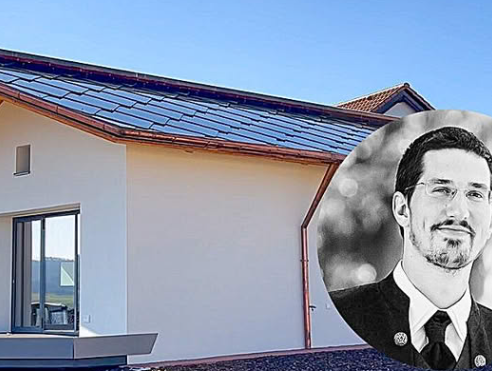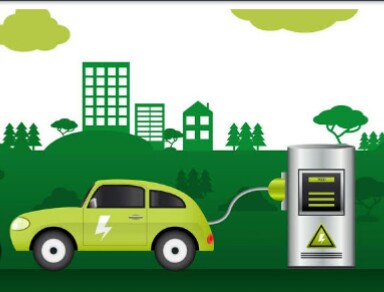Electric Vehicle
Electric Vehicle in Germany
Germany, known for its love affair with automobiles and engineering prowess, is embracing a new era of transportation with the widespread adoption of electric vehicles (EVs). With a strong commitment to sustainability and a thriving automotive industry, Germany is at the forefront of the global electric mobility revolution.
In this article, we delve into Germany’s journey towards electric vehicles, explore the driving factors behind its success, and discuss the environmental and technological advancements that electric mobility brings to the country.
Government Support and Policies
Germany’s government has been instrumental in promoting the adoption of electric vehicles through a series of supportive policies. Financial incentives, such as purchase subsidies and tax benefits, have made EVs more attractive and affordable to consumers. Additionally, the government has invested in the development of charging infrastructure, incentivizing the installation of charging stations in public spaces and private homes. Germany’s ambitious targets include having 10 million EVs on its roads by 2030, highlighting the nation’s commitment to sustainable transportation.
Advanced Charging Infrastructure
Germany boasts an extensive and well-connected charging infrastructure, providing EV owners with convenient access to charging stations across the country. Public charging stations can be found in cities, parking lots, and along major highways, ensuring that EVs can be charged during long-distance trips. Moreover, Germany is actively promoting the installation of private charging stations at residential and commercial properties, further increasing the accessibility and convenience of electric vehicle ownership.
Automotive Industry Leadership
Germany’s automotive industry, renowned for its engineering excellence and precision, has fully embraced electric vehicles. Established automakers, such as Volkswagen, BMW, and Mercedes-Benz, are investing heavily in electric vehicle research and development, launching a wide range of electric models with cutting-edge technology and innovative design. These efforts have not only fueled the growth of the electric vehicle market in Germany but also positioned German automakers as global leaders in electric mobility.
Environmental Advantages
The shift to electric vehicles in Germany has significant environmental benefits. EVs produce zero tailpipe emissions, reducing greenhouse gas emissions and improving air quality, especially in urban areas. Germany’s commitment to renewable energy further amplifies the environmental advantages of electric mobility. By charging EVs with clean energy from sources such as wind and solar power, Germany minimizes its carbon footprint and accelerates the transition to a low-carbon transportation sector.
Technological Innovation and Job Creation
The transition to electric vehicles has opened up new opportunities for technological innovation and job creation in Germany. The development of electric drivetrains, advanced battery technologies, and smart charging solutions has led to the emergence of new industries and skilled job opportunities. German companies are at the forefront of battery production, charging infrastructure development, and software integration, contributing to economic growth and fostering technological advancements.
Global Influence and Collaboration
Germany’s commitment to electric vehicles extends beyond its borders. The country actively collaborates with international partners to advance electric mobility and promote sustainable transportation worldwide. Germany’s expertise in engineering, manufacturing, and infrastructure development serves as a blueprint for other countries seeking to transition to electric vehicles and reduce their carbon footprint.
Electric Vehicle Manufacturing and Industry in Germany
Germany had a significant presence in the electric vehicle (EV) manufacturing and automotive industry.
The country is home to several renowned automakers that have been actively investing in electric mobility.
Here are some key points related to Germany’s electric vehicle manufacturing and industry:
1. Established Automakers: Germany is known for its established automotive industry, with major manufacturers like Volkswagen, BMW, Mercedes-Benz, Audi, and Porsche. These companies have been at the forefront of EV development and production, introducing various electric models to their lineups.
2. Volkswagen’s Commitment: Volkswagen, one of the world’s largest automakers, made a notable commitment to electric mobility. The company launched its ID. series, an entire lineup of electric vehicles based on its MEB (Modular Electric Drive Matrix) platform. VW planned to invest heavily in EV development and aimed to produce millions of electric vehicles over the coming years.
3. BMW’s Electric Models: BMW introduced electric versions of some of its popular models, such as the BMW i3 and i8. The company also invested in plug-in hybrid technology, combining internal combustion engines with electric powertrains.
4. Mercedes-Benz EQ: Mercedes-Benz, a division of Daimler AG, launched its EQ sub-brand, focusing on electric vehicles. The EQC was one of the early electric SUV offerings from the company.
5. Supply Chain and Research: Germany’s automotive industry is known for its robust supply chain, with various companies specializing in producing components for electric vehicles. Additionally, German research institutions and universities have been conducting research and development in electric mobility and battery technology.
6. Collaboration and Partnerships: Some German automakers formed partnerships and collaborations with other companies and organizations to advance electric mobility. For example, Audi partnered with various tech companies and energy providers to develop charging infrastructure and smart grid solutions.
7. Job Creation and Economic Impact: The transition to electric vehicles has also led to discussions about job creation and economic impact in the automotive sector. While EVs require different expertise compared to traditional vehicles, the shift toward electric mobility could potentially create new jobs in areas like battery manufacturing, software development, and renewable energy.
Conclusion Germany’s Transition to Electric Vehicles
Germany’s transition to electric vehicles a transformative shift in the country’s transportation sector.
With strong government support, advanced charging infrastructure, and a thriving automotive industry, Germany is leading the way towards a greener and more sustainable future. The environmental benefits, technological advancements, and economic opportunities presented by electric mobility position Germany as a global leader in the electric vehicle revolution. As Germany continues to drive innovation and collaboration, its efforts inspire nations around the world to embrace electric vehicles as a crucial step towards a cleaner and more sustainable transportation system.
German automakers and the government were likely to continue working on advancing electric mobility and contributing to the global efforts to reduce carbon emissions and combat climate change.
https://www.exaputra.com/2023/07/germanys-transition-to-electric-vehicles.html
Renewable Energy
Manufacturer of “Micro-Wind” Turbines Says, “Start Generating Wind Power on Your Roof Today!”
 If you’re interested in this, you might want to ask yourself:
If you’re interested in this, you might want to ask yourself:
Do I have good wind conditions 10 – 20 feet off the ground, surrounded by other houses and trees?
Mustn’t there be a reason that real wind farms are cited away from buildings, and the turbines are hundreds of feet in the air?
Why did the small wind industry vanish about 15 years ago?
Manufacturer of “Micro-Wind” Turbines Says, “Start Generating Wind Power on Your Roof Today!”
Renewable Energy
Astrophysics and Theology
 At left are the words of Neil deGrasse Tyson, noted astrophysicist and atheist.
At left are the words of Neil deGrasse Tyson, noted astrophysicist and atheist.
His point here seems to be that a loving god would protect us from the threats we face from all corners of the universe.
This is a very common theme in theology: How is it possible that a loving god doesn’t help good people, while allowing evil to prosper?
But it gets worse. Is it a human concept to sentence the unfaithful to suffer eternal torture? Should unfaithful wives be stoned to death?
The list goes on and on.
Renewable Energy
Discussion on Gun Control
 The message at left is that we live among people who believe that every U.S. citizen should be armed at all times. Every teacher, real estate agent, pastry chef, little old lady, and perhaps even our kids themselves, so often murdered by lunatics with assault rifles.
The message at left is that we live among people who believe that every U.S. citizen should be armed at all times. Every teacher, real estate agent, pastry chef, little old lady, and perhaps even our kids themselves, so often murdered by lunatics with assault rifles.
I can hear the Lt. Colonel saying, “The only thing that will stop a psychotic killer with an AR-15 in a schoolroom is a six-year-old with a gun.”
Seriously, there is an important fact here: each year, the United States has 78% of the world’s mass shootings; the other 22% are the aggregate of the other 200+ nations of the world.
Are more guns the answer?
-
Greenhouse Gases4 months ago
Guest post: Why China is still building new coal – and when it might stop
-
Climate Change4 months ago
Guest post: Why China is still building new coal – and when it might stop
-
Climate Change2 years ago
Spanish-language misinformation on renewable energy spreads online, report shows
-

 Greenhouse Gases2 years ago
Greenhouse Gases2 years ago嘉宾来稿:满足中国增长的用电需求 光伏加储能“比新建煤电更实惠”
-
Climate Change Videos2 years ago
The toxic gas flares fuelling Nigeria’s climate change – BBC News
-

 Climate Change2 years ago
Climate Change2 years ago嘉宾来稿:满足中国增长的用电需求 光伏加储能“比新建煤电更实惠”
-

 Carbon Footprint2 years ago
Carbon Footprint2 years agoUS SEC’s Climate Disclosure Rules Spur Renewed Interest in Carbon Credits
-
Climate Change2 years ago
Why airlines are perfect targets for anti-greenwashing legal action












